

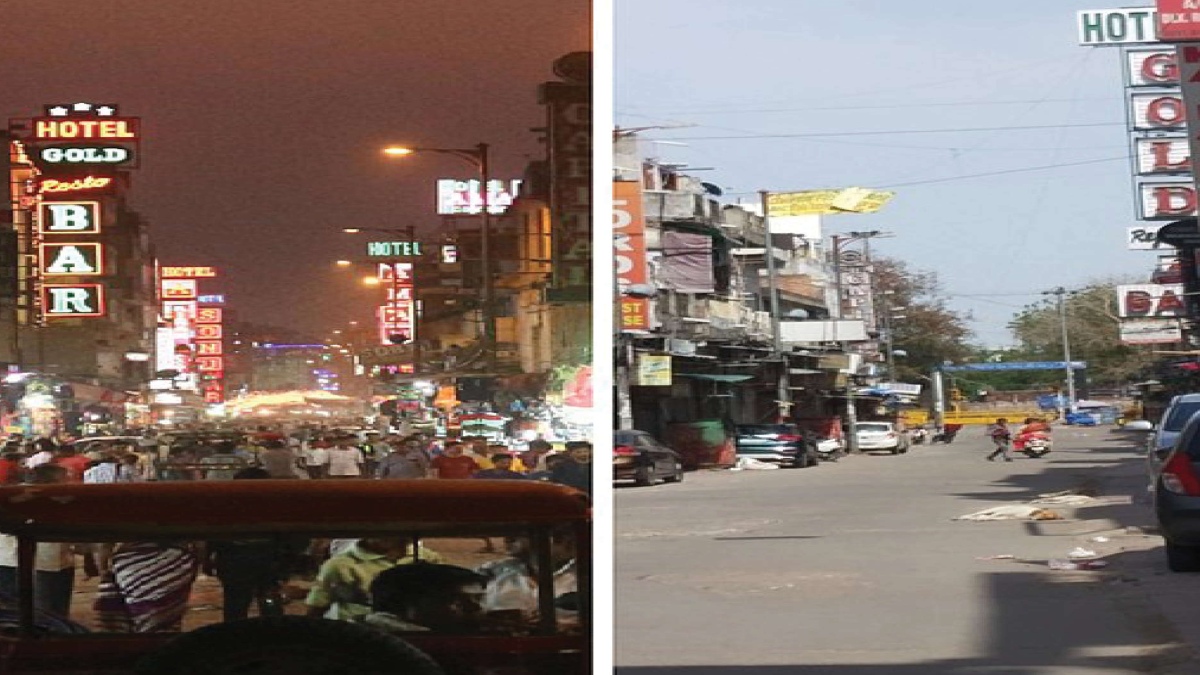
WHAT IS HAPPENING TO THE TRAVEL AND TOURISM SECTOR IN INDIA?
Ongoing consecutive “waves” of the Covid-19 pandemic and the subsequent lockdowns in countries across the world have had an impact on almost every global industry. While no industry, business (big or small), and/or individual has completely escaped the financial impact of the pandemic, some industries have been impacted much more than others. Undoubtedly, one of the most widely affected industries worldwide has been the tourism industry. Tourism is the third-largest export sector in the world, accounting for 7% of global trade (2019). For some countries, tourism accounts for over 20% of overall GDP and is the source of direct and indirect employment for millions.
In November 2020, the World Travel & Tourism Council (WTTC) said that by the end of 2020, 174 million people worldwide could lose their jobs if the restrictions on travel continued. Actual figures revealed that 62 million jobs were lost in 2020 and figures published by the World Tourism Organization (UNWTO) revealed that roughly $1.3 trillion was lost in export revenue in 2020. Tourism is an extremely labour-intensive industry and provides scope of employment for low-skilled workers. While some countries in the world have begun to lift restrictions on foreign and domestic tourist arrivals, India is experiencing a deadly second wave of the Covid-19 crisis and has closed its doors to domestic and international tourists. The travel and tourism industry in the country, accounting for roughly 9% of its GDP (WTTC, 2018), has experienced a sharp decline as tourist footfalls have taken a hit across the country. Most states in India continue to be under lockdown, and even as curbs on movements begin to be lifted, the tourism industry is unlikely to witness an immediate recovery.
Before the Covid-19 pandemic hit India, the tourism and hospitality industry in the country was operating at an all-time high. Travel and tourism is the largest service industry in India and was estimated to be worth $247.37 billion in 2018 as per WTTC data. The industry was the largest Foreign Exchange Earner, with earnings of $29.962 billion in 2019 (y-o-y growth rate of 4.8%). For the same year, the sector contributed nearly $194 billion, around 6.8%, of GDP. In addition to this, the tourism industry accounts for 8% of employment in the country, employing around 39 million people (2018-19). In fact, the government made the industry a major pillar in its “Make in India” program due to its potential for creating jobs. The threat of job losses persists as many jobs are currently supported by government retention schemes and reduced hours, which could be lost without the full recovery of travel and tourism.
With borders closed to foreign and in some cases, even domestic tourists, and the complete shutting down of public places, including hotels and restaurants, the industry fueling the Indian economy in so many ways came to a crashing halt. During the budget session this year, the Minister of State for Tourism said that the total number of tourists arriving in India went from 77.5 lakh during April-December 2019 to 2.13 lakh for the same period in 2020. Foreign tourist arrivals during April-December 2020 registered a decline of 97% as compared to the same period in 2019. Apart from direct revenue generated by foreign tourists and the complete halt of the hospitality sector, domestic and international medical tourism, the MICE (meetings, incentives, conferencing, exhibitions) sector, and MSME output in the tourism sector have all been adversely affected.
In August 2020, Tourism Secretary Yogendra Tripathi said that roughly 2 to 5.5 crore people employed in the tourism sector, directly or indirectly, have lost their jobs in 2020, while the revenue loss in the sector was estimated at INR 1.58 lakh crore. This figure is likely to be much higher in 2021, after the impact of the second wave. The rollout of vaccines in January this year had revived the possibility of increasing domestic tourism, giving those in the industry hopes of a “normal” summer, which is considered to be the peak time of operations for the industry. However, the ravaging impact of the second wave, which swept across the country at a faster speed than the first, took away any chances of a revival. For many in the domestic tourism and hospitality industry, who had hoped to recover losses in 2021 as restrictions were being relaxed, the impact of the second wave and losses could mean final blows to their businesses.
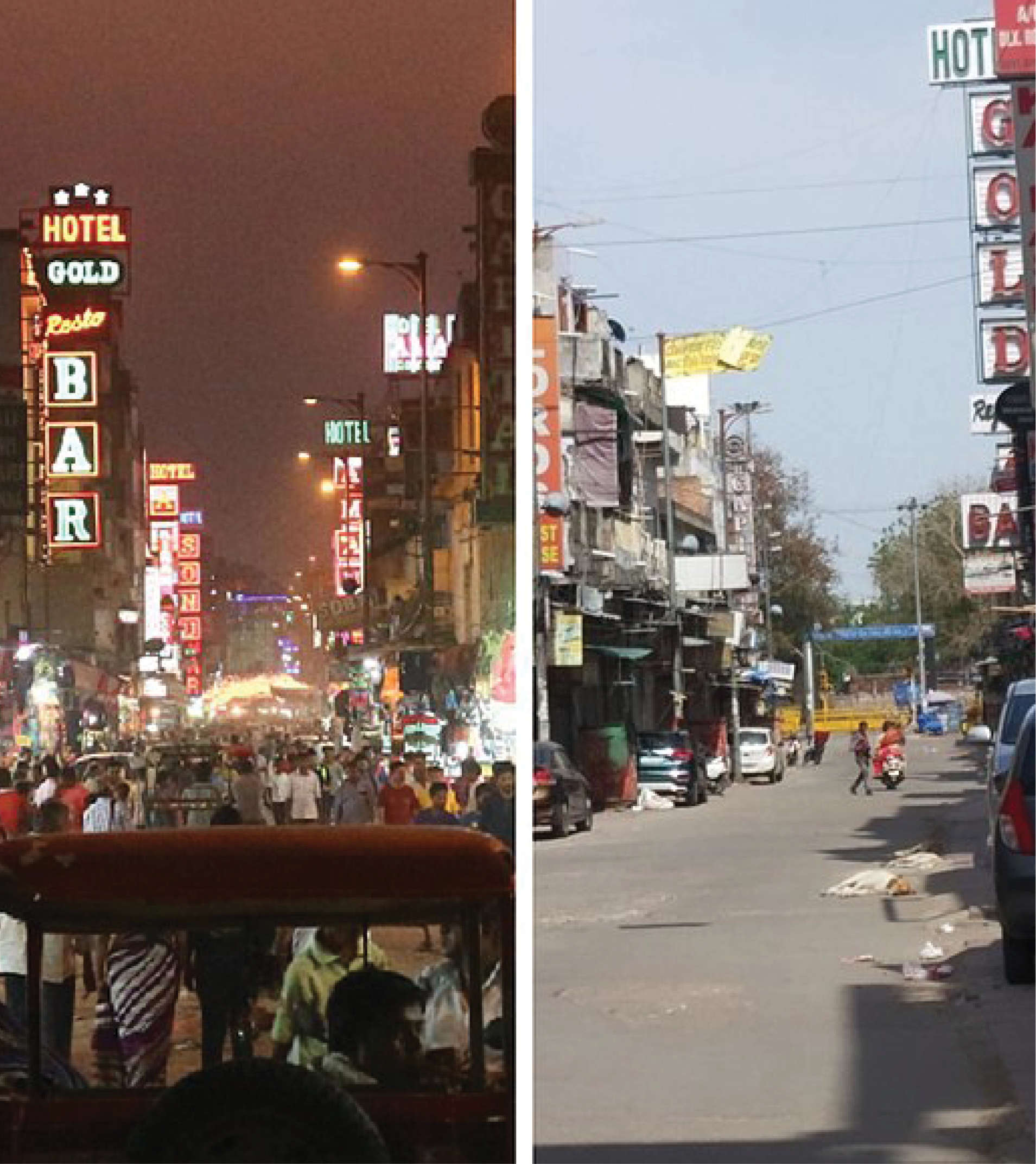

Covid-19 has changed the way people, businesses and countries are approaching tourism with the impact on the industry across the world being unprecedented.
Photograph by Wikimedia Commons
TOURISM-RELIANT STATES: COPING MECHANISMS
As per data provided by the Ministry of Tourism, the top tourist destinations in India are Tamil Nadu, Kerala, Goa, Uttar Pradesh, Rajasthan, Bihar, and West Bengal, with tourism accounting for as much as 20% of the GDP in some of these states. The tourism industry in Goa, which contributes around 17% of the state’s GDP suffered losses of around Rs 2,000-7,200 crores and job losses of around 35-58% during the first wave of the pandemic. The local economy of the state, encompassing small hotels, guest houses, shacks, restaurant owners and employees, taxi drivers, independent guides, and freelancers, directly employs 35% of the state’s population.

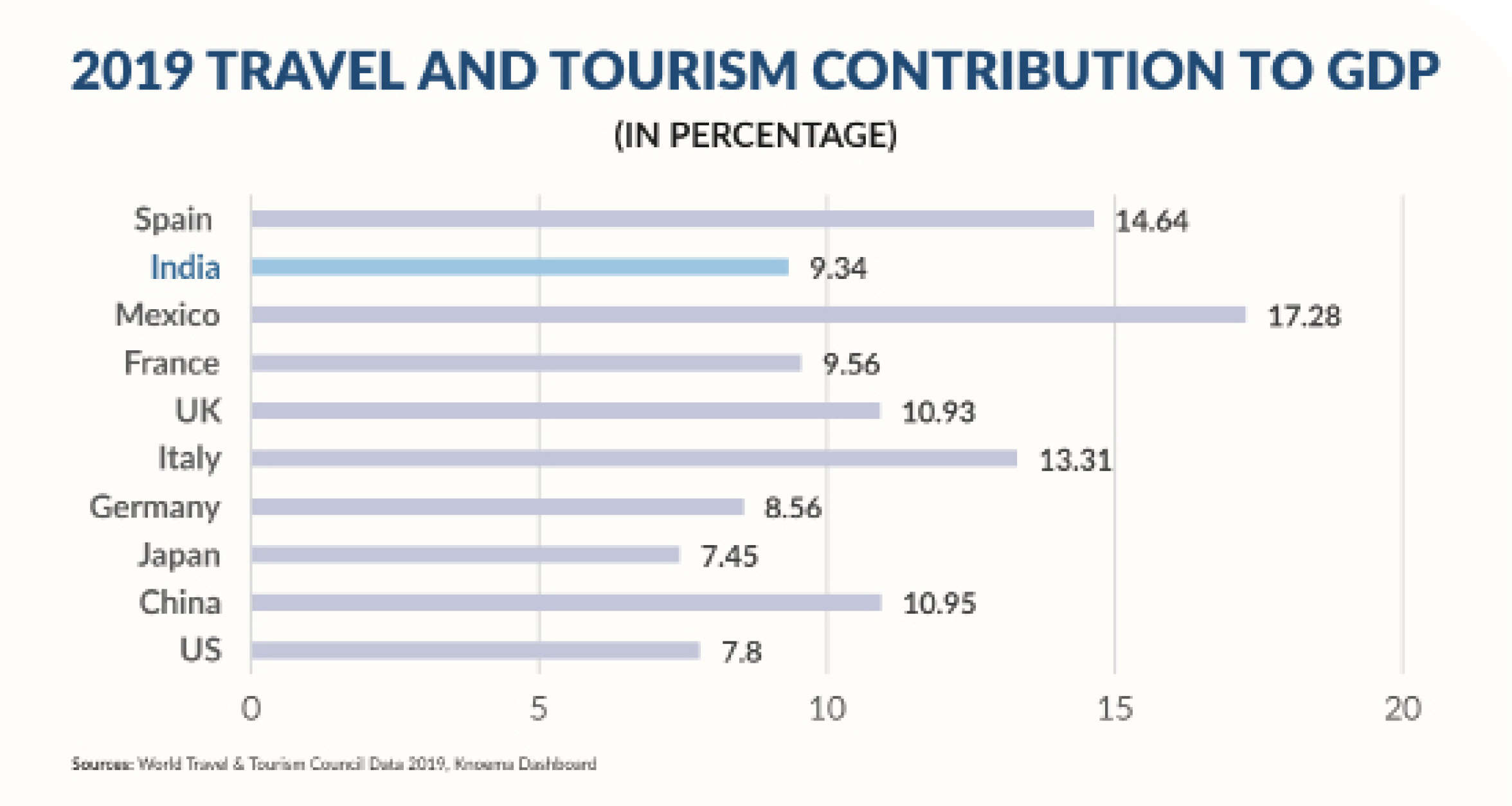
Similarly, in Kerala, the tourism industry contributes to around 10% of the state’s GDP. The sector, which had only just started recovering from the impact of the 2018 floods and the Nipah virus scare, collapsed completely due to the impact of the Covid-19 lockdowns and travel restrictions. Estimated losses from domestic tourism are around Rs 19,697 crore, and approximately Rs 5,274 crore from loss of foreign tourism. Bihar, which is home to the UNESCO world heritage sites of the Mahabodhi temple in Bodh Gaya and ruins of the ancient Nalanda University, witnessed a major decline in the number of foreign as well as domestic tourists. The state of Rajasthan, which is also heavily reliant on tourism, witnessed a 60% drop in the arrival of foreign tourists and 70% drop in domestic tourists, resulting in a deep impact on the domestic economy.
WHAT IS THE GOVERNMENT DOING TO HELP?
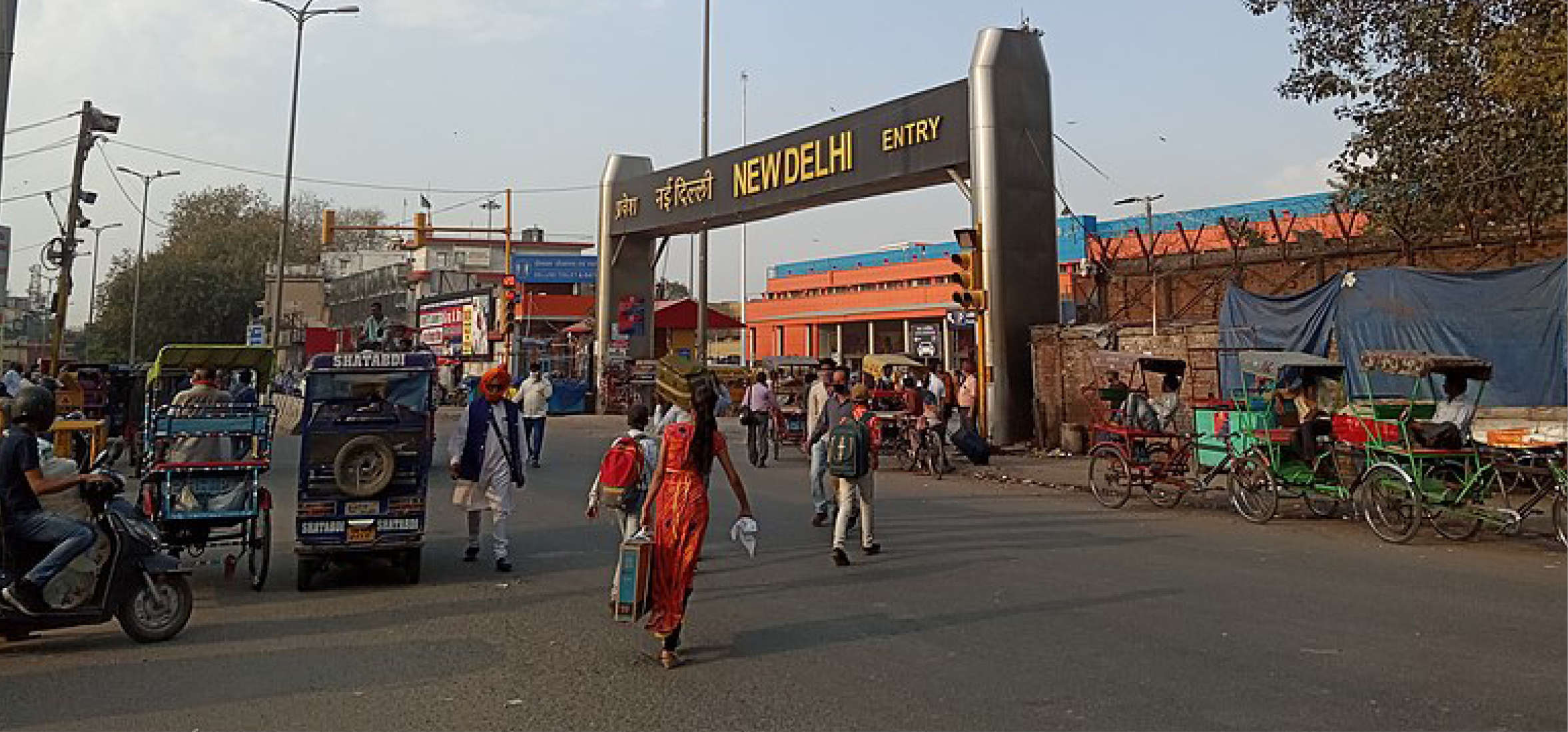
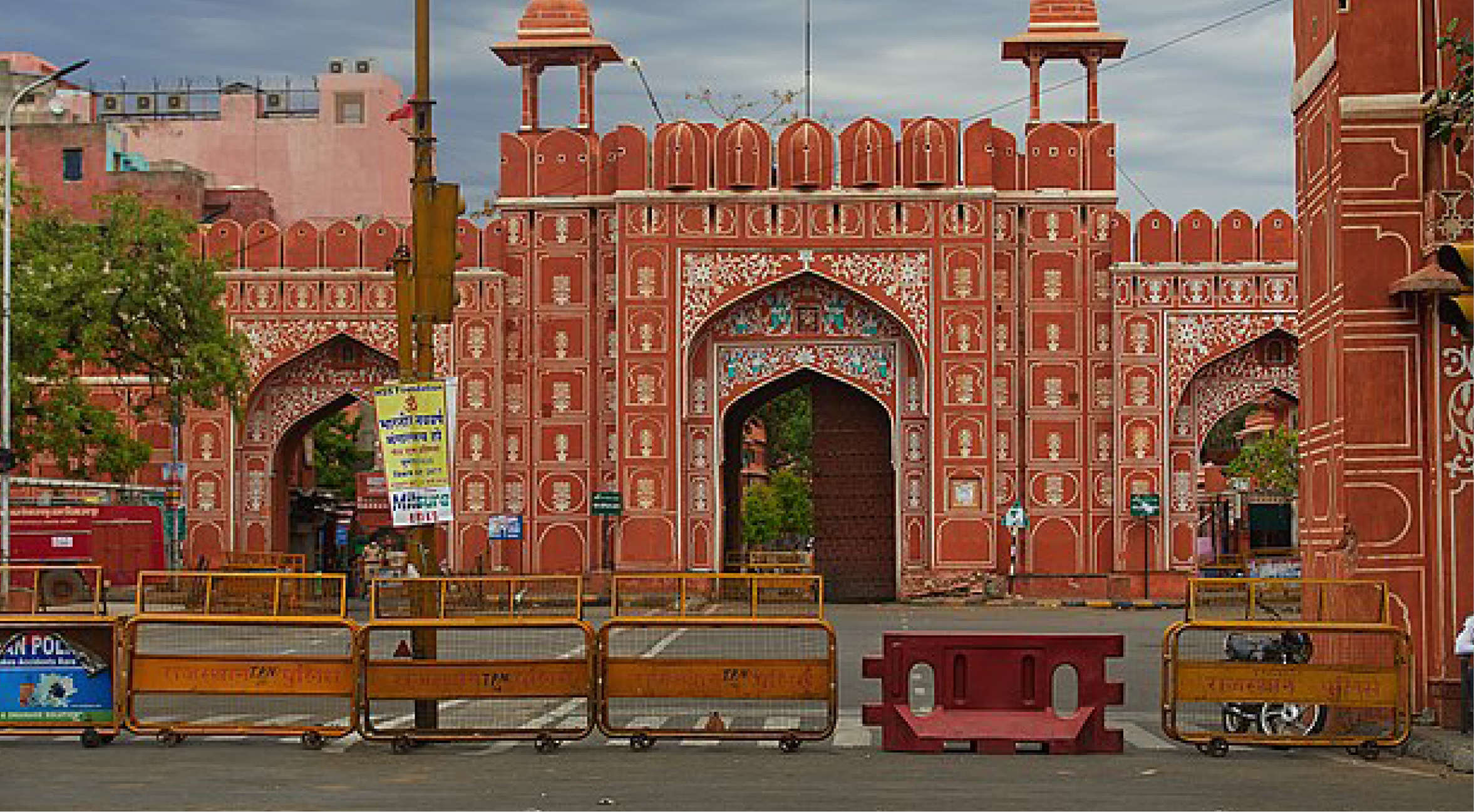
In April 2020, the Ministry of Tourism constituted a National Tourism Taskforce, to be headed by the Minister of State for Tourism to meet the challenges posed by Covid-19. The task force consisted of state tourism ministers, joint secretary-level officers as well as heads of tourism and hospitality associations.
Tourism-reliant states have also announced various measures to help their own local economies bear the brunt of the Covid-19 pandemic. In Jammu and Kashmir, an Rs 1,350 crore economic package was announced to help various sectors impacted by the pandemic. This included a financial assistance package for shikara owners, tourist guides, pony walas, and those who rent palanquins to tourists.
The Rajasthan government also announced an investment of Rs 500 crore to the Tourism Development Fund along with relief under the Rajasthan Investment Promotion Scheme 2019 for one extra year to establishments in the tourism, multiplex, and hotel sectors.
The Delhi government has allocated Rs 521 crore in the 2021-22 budget for the implementation of schemes, programmes, and projects in the tourism, ar, and culture sectors and introduced ‘Delhi Heritage Promotion’ and ‘Delhi Tourism Circuit’ to help revive the sector post-pandemic.
Despite these measures, it is unclear whether the tourism sector will be able to survive the impact of the second wave of Covid-19. Travel agents, hotel and restaurant owners, employees, local artisans, travel guides, among others, were all relying on a glimmer of hope for the tourism sector after the first wave.
The crushing impact of the second wave and the closing down of borders has quashed all hopes of a faster and earlier recovery.
As India continues to deal with the impact of the second wave, the tourism industry, unlike other industries which would begin recovery immediately after restrictions are lifted, is unlikely to bounce back as fast as hoped.
